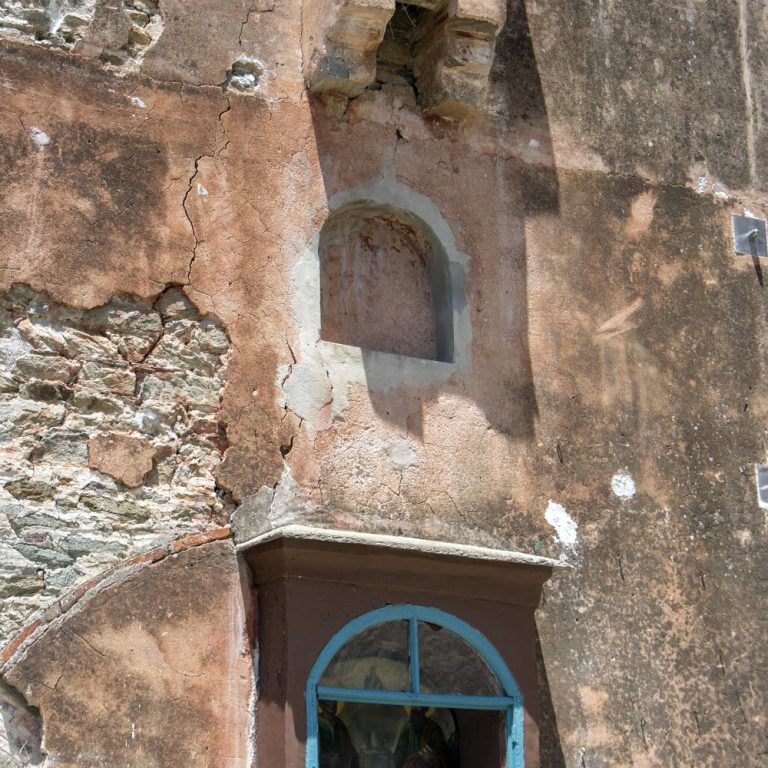From The Ivth Crusade To The 14th Century
With the IVth Crusade in 1204 and the following Frankish rule, the Monastery Karakallou suffered along with the rest of Mt Athos. Latin pirates roamed the Athos peninsula undisturbed, looting and destroying monasteries, including the Karakallou, where the Prior and the members of the brotherhood were held as prisoners. In the Life of St Sabbas – the Archbishop of Serbia and co-founder of the Chilandarios Monastery – written by Dometianos and Theodosios, states that in 1204, the Great Lavra Monastery offered to pay the ransom for the release of the monks on the condition that the Karakallou Monastery and all its dependences would become the property of the Great Lavra. However, St Sabbas personally paid the ransom, thereby securing the freedom of the prisoners and also avoiding any debt to the Great Lavra Monastery, as well as earning eternal gratitude for himself and his family. Although the Lives is considered a secure and trusted source, it is perhaps the only reference to one Athonite monastery being subject to another, i.e., the event is not confirmed by any other source.
With the end of Roman rule and the recovery of Macedonia by the Byzantines, the Monastery started to flourish and to acquire new properties. From 1262, the names of the priors are once again mentioned in the sources: In 1262, the monk Neofytos was the Prior, and in 1287, it was the hieromonk and advisor Kosmas.
During the last decades of the 13th century, during the time of Michael VIII Palaiologos, and in particular during that of his successor Andrononikos II, the Monastery experienced significant development, due in large part to the relationship of the Monastery with the Patriarch of Konstantinople, St Athanasios I (1289-1293, 1303-1309). With his active intervention during the latter years of his administration, the rights of the Monastery regarding both its old dependencies and those more recently acquired were firmly established.
At that time (1287), the Monastery was involved in a dispute – a long-term one, as it proved to be, since it was not completely settled until the end of the 16th century – about border differences with the Great Lavra Monastery, and the designation of boundaries in the area of the Amalfinon Monastery, which at that time was attached to the former. On the land of the Amalfinon Monastery which bordered on that of Karakallou, the skete Probatas had developed. Perhaps this conflict caused the publication of the chrysobull by Andronikos II, the first written record delineating the property of the Monastery, including its dependencies and its holdings both within and outside Mt Athos.
With the end of Roman rule and the recovery of Macedonia by the Byzantines, the Monastery started to flourish and to acquire new properties. From 1262, the names of the priors are once again mentioned in the sources: In 1262, the monk Neofytos was the Prior, and in 1287, it was the hieromonk and advisor Kosmas.
During the last decades of the 13th century, during the time of Michael VIII Palaiologos, and in particular during that of his successor Andrononikos II, the Monastery experienced significant development, due in large part to the relationship of the Monastery with the Patriarch of Konstantinople, St Athanasios I (1289-1293, 1303-1309). With his active intervention during the latter years of his administration, the rights of the Monastery regarding both its old dependencies and those more recently acquired were firmly established.
At that time (1287), the Monastery was involved in a dispute – a long-term one, as it proved to be, since it was not completely settled until the end of the 16th century – about border differences with the Great Lavra Monastery, and the designation of boundaries in the area of the Amalfinon Monastery, which at that time was attached to the former. On the land of the Amalfinon Monastery which bordered on that of Karakallou, the skete Probatas had developed. Perhaps this conflict caused the publication of the chrysobull by Andronikos II, the first written record delineating the property of the Monastery, including its dependencies and its holdings both within and outside Mt Athos.

